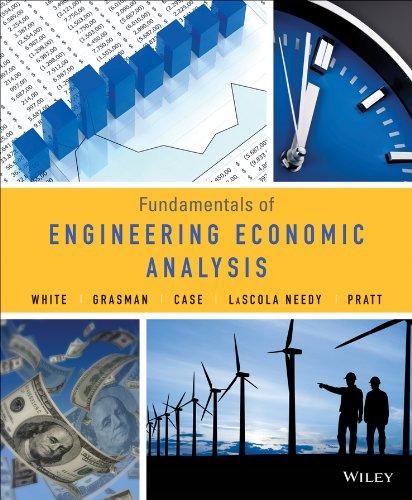46. Lynchburg has two old four-lane roads that intersect, and traffi c is controlled by a standard...
Question:
46. Lynchburg has two old four-lane roads that intersect, and traffi c is controlled by a standard green, yellow, red stoplight. From each of the four directions, a left turn is permitted from the inner lane; however, this impedes the fl ow of traffi c while a car is waiting to safely turn left. The light operates on a two-minute cycle with 60 seconds of green-yellow and 60 seconds of red for each direction.
Approximately 10 percent of the 12,000 vehicles using the intersection each day are held up for an extra 2 full minutes and average 3 extra start-stop operations, solely due to the left-turn bottleneck. These delays are realized during 300 days per year. A start-stop costs 3 cents per vehicle, and the cost of the excess waiting is $18/hour for private traffi c and $45/hour for commercial traffi
c. Approximately 3,000 of the vehicles are commercial, with the remainder being private. The potential benefi t to the public is that the cost of extra waiting and start-stops can be reduced by 90 percent through a project to widen the intersection to include specifi c left-turn lanes and use of dedicated left-turn arrows. If the planning horizon is 10 years and the city uses a 7 percent interest rate, what is the most that can be invested in the project and maintain a B/C ratio of 1.0 or greater? There will be no additional maintenance cost.
Step by Step Answer:

Fundamentals Of Engineering Economic Analysis
ISBN: 9781118414705
1st Edition
Authors: John A. White, Kellie S. Grasman, Kenneth E. Case, Kim LaScola Needy, David B. Pratt






